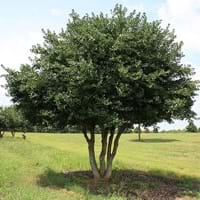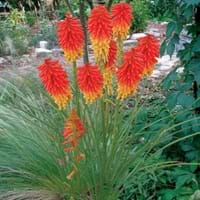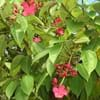Life Span
Perennial
Perennial
Type
Broadleaf Evergreen
Perennial
Origin
Southeastern United States
Hybrid origin
Types
not available
Not Available
Habitat
Forest edges, Swamps, Woods
Damp Places, Marshy ground
USDA Hardiness Zone
7-11
6-9
AHS Heat Zone
Not Available
9-4
Sunset Zone
21,22
2a, 2b, 3a, 3b, 4, 5, 6, 7, 8, 9, 14, 15, 16, 17, 18, 19, 20, 21, 22, 23, 24
Habit
Upright/Erect
Clump-Forming
Flower Color
White
Yellow, Red, Orange, Pink
Flower Color Modifier
Bicolor
Bicolor
Fruit Color
Yellow, Red, Orange
Not Available
Leaf Color in Spring
Green, Dark Green
Green, Blue Green
Leaf Color in Summer
Green, Dark Green
Green, Blue Green
Leaf Color in Fall
Olive, Dark Green
Blue Green, Gray Green, Light Yellow
Leaf Color in Winter
Olive, Dark Green
Light Green
Plant Season
Spring, Summer, Fall, Winter
Spring, Summer
Sunlight
Full Sun, Partial Sun, Partial shade, Full Shade
Full Sun, Partial Sun
Growth Rate
Medium
Medium
Type of Soil
Clay, Loam, Sand
Clay, Loam, Sand
The pH of Soil
Acidic, Neutral, Alkaline
Acidic, Neutral
Soil Drainage
Average
Well drained
Bloom Time
Spring
Early Summer, Summer
Tolerances
Pollution, Drought, Salt, Soil Compaction
Drought
Where to Plant?
Container, Ground, Pot
Container, Ground
How to Plant?
Seedlings
Divison, Seedlings
Plant Maintenance
Medium
Medium
Watering Requirements
Not Available
Needs more water during establishment, Water Deeply, Water in morning to avoid prompting diseases, Water in the early morning hours
In Summer
Lots of watering
Lots of watering
In Spring
Moderate
Moderate
In Winter
Average Water
Average Water
Soil pH
Acidic, Neutral, Alkaline
Acidic, Neutral
Soil Type
Clay, Loam, Sand
Clay, Loam, Sand
Soil Drainage Capacity
Average
Well drained
Sun Exposure
Full Sun, Partial Sun, Partial shade, Full Shade
Full Sun, Partial Sun
Pruning
Remove damaged leaves, Remove dead branches, Remove dead leaves
Cut or pinch the stems, Remove damaged leaves, Remove dead branches, Remove dead leaves
Fertilizers
All-Purpose Liquid Fertilizer
All-Purpose Liquid Fertilizer, Apply N-P-K
Pests and Diseases
Red blotch
Onion thrips, Red blotch, Root rot
Plant Tolerance
Drought
Drought, Moisture
Flowers
Insignificant
Yes
Flower Petal Number
Single
Single
Foliage Texture
Fine
Coarse
Foliage Sheen
Glossy
Matte
Allergy
Not Available
Not Available
Aesthetic Uses
Bonsai, Showy Purposes
Borders, Cottage Garden, Ground Cover
Beauty Benefits
Not Available
Not Available
Environmental Uses
Wildlife
Air purification
Medicinal Uses
No Medicinal Use
Not Available
Part of Plant Used
Fruits, Whole plant
Not Available
Other Uses
Used As Food, Used as Ornamental plant
Not Available
Used As Indoor Plant
Yes
No
Used As Outdoor Plant
Yes
Yes
Garden Design
Container, Feature Plant, Foundation, Groundcover, Hedges, Mixed Border, Screening, Wind Break, Topiary, Bonsai, Espalier
Container, Cutflower, Mixed Border, Rock Garden, Wall
Botanical Name
ILEX vomitoria
KNIPHOFIA 'Border Ballet'
Common Name
Yaupon, Yaupon holly
Tritoma, Wisley Blue Spring Starflower, Wisley Blue Springstar
In Spanish
Yaupon
tritoma
In Portuguese
Yaupon
Tritoma
Phylum
Magnoliophyta
Tracheophyta
Class
Magnoliopsida
Magnoliopsida
Order
Celastrales
Asparagales
Family
Aquifoliaceae
Liliaceae
Clade
Angiosperms, Asterids, Eudicots
Angiosperms, Monocots
Tribe
Not Available
Not Available
Subfamily
Not Available
Not Available
Number of Species
Not Available
Season and Care of Yaupon Holly and Tritoma
Season and care of Yaupon Holly and Tritoma is important to know. While considering everything about Yaupon Holly and Tritoma Care, growing season is an essential factor. Yaupon Holly season is Spring, Summer, Fall and Winter and Tritoma season is Spring, Summer, Fall and Winter. The type of soil for Yaupon Holly is Clay, Loam, Sand and for Tritoma is Clay, Loam, Sand while the PH of soil for Yaupon Holly is Acidic, Neutral, Alkaline and for Tritoma is Acidic, Neutral.
Yaupon Holly and Tritoma Physical Information
Yaupon Holly and Tritoma physical information is very important for comparison. Yaupon Holly height is 120.00 cm and width 150.00 cm whereas Tritoma height is 45.70 cm and width 50.80 cm. The color specification of Yaupon Holly and Tritoma are as follows:
Yaupon Holly flower color: White
Yaupon Holly leaf color: Green and Dark Green
Tritoma flower color: Yellow, Red, Orange and Pink
- Tritoma leaf color: Green and Blue Green
Care of Yaupon Holly and Tritoma
Care of Yaupon Holly and Tritoma include pruning, fertilizers, watering etc. Yaupon Holly pruning is done Remove damaged leaves, Remove dead branches and Remove dead leaves and Tritoma pruning is done Cut or pinch the stems, Remove damaged leaves, Remove dead branches and Remove dead leaves. In summer Yaupon Holly needs Lots of watering and in winter, it needs Average Water. Whereas, in summer Tritoma needs Lots of watering and in winter, it needs Average Water.





